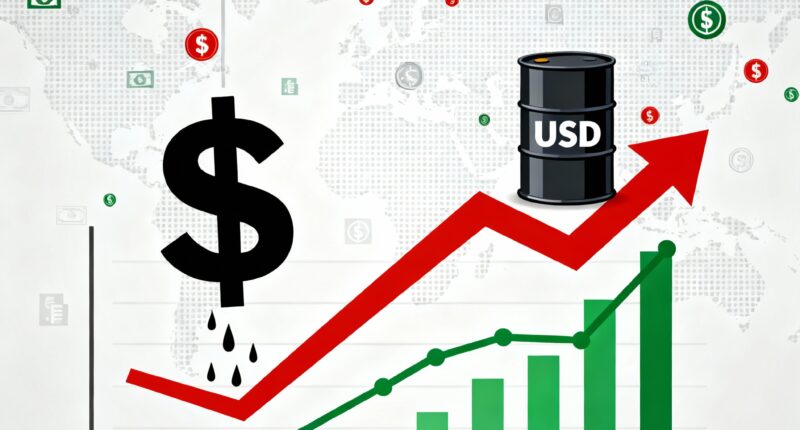Why the US Dollar Is Slipping While Oil Rebounds: Market Reactions and Predictions
Introduction: A Pivotal Week in Finance
This week marks a turning point in global finance as we witness the US dollar slipping and oil prices rebounding. The movement is driven by a unique mix of political uncertainties, central bank actions, and strategic plays by OPEC+, all unfolding as investors weigh the implications for their portfolios and broader economies.
US Dollar Slumps After Key Polls and Policy Signals
The US dollar started the week on a weaker footing, losing ground after recent polling from Iowa suggested a Democratic presidential lead. This survey, well-regarded by markets, nudged the dollar down about 0.9% against the Japanese yen and 0.6% against the euro. The Australian dollar, sensitive to trade flows, even rebounded by 0.8%. Political uncertainty, driven by tight polls and the looming US elections, is shaking investor confidence and leading some to drop dollar positions.
Central Banks’ Decisions Add Pressure
Compounding the dollar’s decline is the expectation of monetary easing from major central banks. Markets widely expect the Federal Reserve to cut rates at this week’s meeting, regardless of the election result. Futures prices indicate a high likelihood—98%—of a 25-point reduction. The Bank of England and Sweden’s Riksbank are also poised to reduce rates, further pressuring the dollar as global liquidity rises.
Oil Prices Rebound After OPEC+ Extends Production Cuts
In sharp contrast to the dollar’s slide, oil prices are surging as OPEC+ announced it would extend its current production cuts through December. The anticipated increase in output has been postponed, helping prices rally. Brent futures climbed by $1.18 (up 1.61%), reaching $74.28 a barrel, while WTI rose $1.21 to $70.70. OPEC+’s decision reverses previous plans for monthly boosts and maintains supply constraints—an effective tactic to stabilize prices.
Why OPEC+ Acted—and What’s Next
OPEC+ had been set to gradually restore 2.2 million barrels per day of production, disrupted by the ongoing global slowdown and volatile demand. But with crude prices dipping and fiscal pressures mounting on member states, the group opted for caution, maintaining output at current levels. The move not only pushed prices higher, but also signaled confidence among oil-exporting nations that demand should hold firm into year’s end.
Market Reactions Around the World
Global stock markets have responded with cautious optimism. Asian bourses—especially Seoul’s KOSPI index—rallied while China’s markets rose on hopes of new stimulus packages. In Europe, futures suggest a modestly positive opening for stocks. Currency traders, meanwhile, remain alert for further volatility as the US election outcome could trigger dramatic swings.
What Investors Should Watch For
Investors are watching for several immediate triggers: the Federal Reserve and Bank of England rate decisions, OPEC+ adherence to cuts, and fresh fiscal measures from China. Heightened uncertainty could favor assets like gold or further prop up oil prices, while further dollar declines are possible if US political and economic risk persists.
Predictions for the Coming Weeks
Looking ahead, analysts expect the dollar to remain under pressure if rate cuts are confirmed and political uncertainty remains. Oil prices may continue their rebound if OPEC+ maintains its stance and global demand picks up post-stimulus. Investors should be ready for volatility and consider hedging, with robust opportunities likely in commodities and Asian equities.
Conclusion: Navigating Change in Global Markets
As we move further into November, the interplay between currency moves and commodity prices will test investor resilience. Staying informed about central bank moves, OPEC+ decisions, and global political developments is crucial for capitalizing on market opportunities and safeguarding portfolios.










14 comments
Morning🍀
Thanks💵
Good evening
Thanks
Thank for sharing
Good articke & thanks.
Thanks.Very helpful
Thanks.
Ok think,s
Thanks for all sharing
Thanks
Hi
OK.